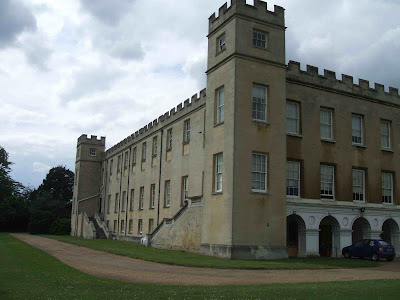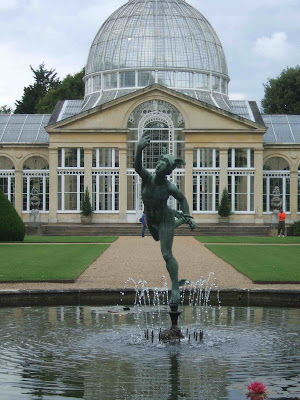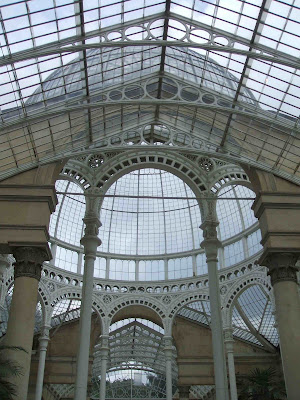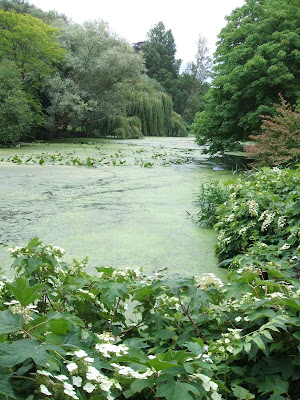Remember, the next meeting of the Jane Austen movie club will be next Tuesday, August 7! (Not today, as I once erroneously stated.) We’ll be discussing the Gwyneth Paltrow EMMA. So stop by!
Cara
Remember, the next meeting of the Jane Austen movie club will be next Tuesday, August 7! (Not today, as I once erroneously stated.) We’ll be discussing the Gwyneth Paltrow EMMA. So stop by!
Cara
 I recently learned about an article in the Guardian which documents an experiment by David Lassman, the director of the Jane Austen Festival in Bath. He sent minimally tweaked versions of Jane’s novels to various publishers, who responded with rejections, most of them not seeming to have recognized the hoax.
I recently learned about an article in the Guardian which documents an experiment by David Lassman, the director of the Jane Austen Festival in Bath. He sent minimally tweaked versions of Jane’s novels to various publishers, who responded with rejections, most of them not seeming to have recognized the hoax.
This could be very depressing–if professionals in the publishing world are really unfamiliar with Jane Austen’s work or unimpressed by her wit and characterizations.
Instead, I suspect that the readers and editors handling these submissions did recognize Jane’s words but decided the source was a plagiarist (a stupid one!) or a nutjob or both, best handled with a form letter.
Still it leads to some interesting questions.
What if Jane’s books were never published in their own time and the manuscripts had just recently been discovered in some attic? I think they would generate interest as period novels and sources of information on society and women’s lives. Academics would read them. Some would inevitably become Janeites and pass the books onto their friends, reaching at least some level of cult popularity. Anyway, that’s my guess.
So let’s take the alternate reality further. What if Jane somehow time traveled into the present with her manuscripts, so they’d have to be represented to publishers as historical fiction? I’m not sure what would happen then.
If submitted as literary fiction would editors say they have too many romantic elements (plus that gauche HEA)? If submitted as romance, would editors tell Jane they weren’t sexy enough? Or would some clever person recognize that there’s a market for them? If there were not already a Jane phenomenon (as discussed in Janet’s post on I Dream of Darcy), our culture might still be ready for one.
Now–get your rotten tomatoes ready!–if I were that clever person, I have a dreadful suspicion that I would ask Jane to tighten her pacing and alter some of her language. I truly don’t think it makes sense for modern authors to be pedantic in trying to recreate period language. Making things accessible to modern audiences does not automatically equate to dumbing down. It’s not just about money; it’s about getting good stories out to a broader audience.
What do you think? Would Jane sell again today? If you were the acquiring editor, what would you do?
Elena
Well, it’s been a month since I returned from my trip to England & France, so it’s about time I shared some pictures, right?
First, a picture of the front of Syon House.
Syon Park is located near London (and you can tell — it’s like a country house paradise, ruined by the constant noise of planes flying overhead), and bills itself “London home of the Duke of Northumberland.” (Ah, yes, that’s the sort of second home I could live with — I could even tolerate the planes.)
The next photo is of the back of Syon House. 
First came Syon Abbey. Then came Henry the Eighth. Syon Abbey refused to bow to Henry’s religious ideas, so soon, Syon Abbey was no more.
Which is really too bad, because Syon Abbey was apparently quite unusual… It was a Bridgettine Abbey, housing both men and women, and extremely wealthy. Recent architectural research argues that the Abbey Church was unique in England, and quite huge.
 Our next photo is, of course, a side view of the house!
Our next photo is, of course, a side view of the house!
In 1547, the Duke of Somerset (then Lord Protector to King Edward VI) took the estate, and began constructing Syon House in the Renaissance style. Of course, in true Renaissance fashion, Somerset eventually fell out of power, and was executed in 1552.
The house itself is a square house, built around an internal courtyard, giving the interior a lot of sunlight, and an airy, almost Mediterranean feel.
 Here we see the interior courtyard of the house.
Here we see the interior courtyard of the house.
In 1604, James I gave Syon to Henry Percy, the 9th Earl of Northumberland (and descendent of Shakespeare’s “Hotspur.”) Unfortunately, soon after this, his cousin took part in Guy Fawkes’s attempt to blow up Parliament, and the earl went to the Tower for fifteen years as a suspected conspirator.
 The next four photos show one of the most stunning features of Syon Park: the Great Conservatory.
The next four photos show one of the most stunning features of Syon Park: the Great Conservatory.
The Regency-era owners of Syon Park were Hugh, the 2nd Duke of Northumberland (who had the title from 1786 to 1817), and Hugh, the 3rd Duke of Northumberland (who was duke from 1817 to 1847).
The 2nd Duke was an army man, and fought in the Seven Years War and the American Revolution (where, among other things, he commanded the relief force at Lexington).
 The Great Conservatory was built between 1826 and 1827. The architect was Charles Fowler (who also designed the covered market at Covent Garden); the masonry, of Bath stone, was by Thomas Cundy; and the metalwork was by James Richards of Birmingham.
The Great Conservatory was built between 1826 and 1827. The architect was Charles Fowler (who also designed the covered market at Covent Garden); the masonry, of Bath stone, was by Thomas Cundy; and the metalwork was by James Richards of Birmingham.
The whole estate is really quite gorgeous. Though the outside of the house is plain and rather uninspiring (it’s no accident that brochures advertising the estate tend to show the conservatory rather than the house), the interiors are utterly fabulous. Adam did a lot of the interiors, including the famous double cube room. Inside photos are banned, so I have none, but if you want to see the interiors, you can see some here: http://www.syonpark.co.uk/

Todd and I did get rather lost walking from the train station to Syon Park — our directions were poor, and construction had made signs hard to see — so by the end of the day, our feet were killing us. But except for that, it was really a lovely day.
 Indeed, if you take one day trip from London to see a stately home, I think Syon would be my recommendation. I’ve seen most of the stately homes and villas near London, including Ham House, Marble Hill House, Chiswick, the Queen’s House in Greenwich, and Kenwood House, and I found Syon the most enjoyable.
Indeed, if you take one day trip from London to see a stately home, I think Syon would be my recommendation. I’ve seen most of the stately homes and villas near London, including Ham House, Marble Hill House, Chiswick, the Queen’s House in Greenwich, and Kenwood House, and I found Syon the most enjoyable.
The grounds are lovely too — but more on that later.
One particularly interesting thing we saw — some archeologists (and a television reality show about archeologists, or some such thing) are currently excavating the remains of Syon Abbey. (This is how they now realize just how huge the church at Syon Abbey was.)
As I mentioned, the grounds are lovely. We had neither the time nor the feet to do much walking around, but we did stroll a bit on this river path.
In an attempt to bring in more money, part of Syon Park has been made into a children’s playground, the fancy sort that one pays to visit. There is also a large commercial gardening center — which seemed quite popular.
Some guidebooks were rolling their eyes at all this sad commercialization, but it seems to me that children’s playgrounds and garden centres make more sense than some of the alternatives.
 Well, that was my trip to Syon! In the coming weeks, I shall have more photos for you all, and info about Regency-era Nice, among other things. (I have SO many photos! The blessing and the curse of having a digital camera.)
Well, that was my trip to Syon! In the coming weeks, I shall have more photos for you all, and info about Regency-era Nice, among other things. (I have SO many photos! The blessing and the curse of having a digital camera.)
And remember: in two weeks is our next cyber-meeting of The Jane Austen Movie Club! (I had erroneously said it was next week — sorry, I can’t read a calendar!!! Yes, Cara, it’s ALWAYS THE FIRST TUESDAY OF THE MONTH. Which means August 7.) This time we’ll be discussing the version of EMMA starring Gwyneth Paltrow and Jeremy Northam. So if you’ve ever seen it, please show up and share your opinions!
And if you’ve never had the chance, you still have a week to rent it…and see what you think about Ewan McGregor as Frank Churchill, Alan Cumming as Mr. Elton, and Toni Collette as Harriet Smith!
So…the questions for today are: which is your favorite photo? What was Henry the Eighth’s problem, anyway? What’s your favorite country house or villa? How would you like to have Syon as YOUR second home? And if you’ve ever been to Syon, what did you think?
Cara
Cara King, author of MY LADY GAMESTER, which has not a single country house any it, not even of any kind
Janga, you’ve won a copy of Secrets of a Lady by Tracy Grant!
Please send your address to riskies@yahoo.com
Thanks to everyone who commented! Be sure to come back this coming Sunday, when our own Amanda McCabe will be giving away her new book, and we’ll have a great new interview with her!
The Riskies
Sign up for the Riskies newsletter at riskies@yahoo.com and get advance notice of our contests! Please put NEWSLETTER in the subject line.
 While everyone was having fun at RWA I’ve done a little quiet celebrating myself. This past Friday, I finally completed the 2nd draft of my mess-in-progress. 🙂
While everyone was having fun at RWA I’ve done a little quiet celebrating myself. This past Friday, I finally completed the 2nd draft of my mess-in-progress. 🙂
This may not sound like much but it’s huge for me, because it means the plot and characters have evolved from the primordial ooze of the 1st draft into something that promises to be a story.
It’s the most difficult part of my process. I still have a load more research to do (my plots always twist, requiring new areas of research). I have a lot of rewriting to do, but I am a very good rewriter.
Still my inner demons remind me it’s been about 2 years since I started this story. And…sigh…I’ve heard readers forget authors if there’s a gap of more than a year between books.
I can’t really do anything about that. I’m not a fast writer. This particular story is taking longer because I’ve also worked on 3 other stories at the same time and struggled to locate my errant muse. But even at my best pace it takes time for me to understand my characters. I don’t know if I’d ever be able to write more than one book a year–not a book I’d want my name on, anyway.
This isn’t to imply that taking longer on a book necessarily ends up in a better read. I have read some books that had great concepts but which I thought needed more development. On the other hand, if the concept isn’t workable, no amount of polishing will fix it.
Nor am I saying prolific authors can’t produce quality. We all have different processes. But I have this feeling that the sort of stories I most enjoy require maturing time. Many of my favorite authors take a year or more per book. In the case of those who write more quickly I’m willing to bet the stories were already percolating in their minds ahead of time.
I’m also not sure I buy the whole reader forgetfulness thing. I know I will pounce on the next Judith Ivory or Laura Kinsale whenever they come out. Now *blush* I am not implying my books are anywhere near as memorable as theirs. I’d just rather like to think a few readers will remember me kindly by the time my next one comes out!
So anyway, what do you think about the relationship between the time it takes to write a book and its quality? Do you think the average reader does forget authors after a year? Are there authors you’ll wait for?
Elena
www.elenagreene.com
